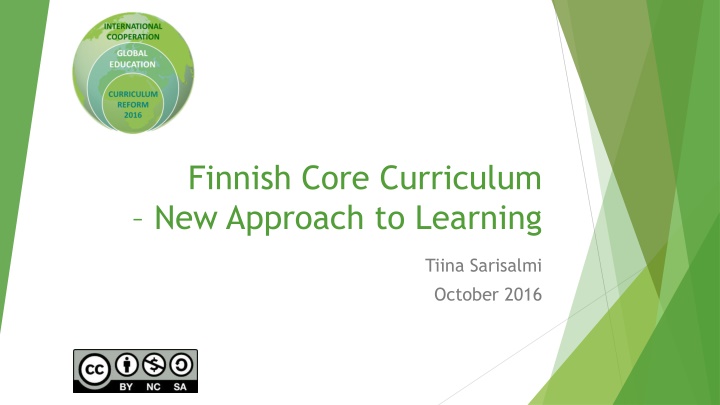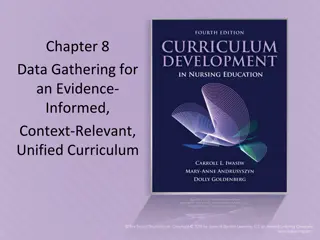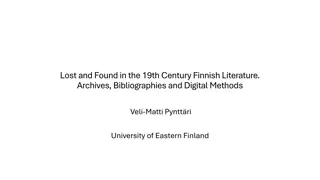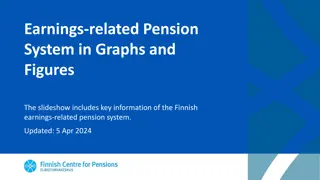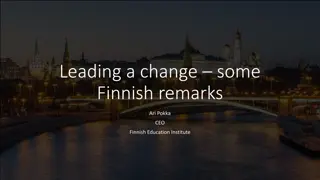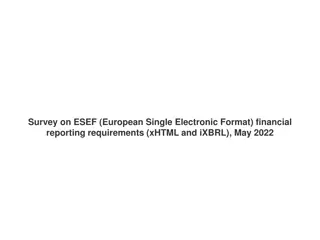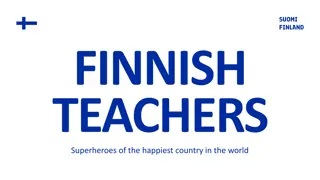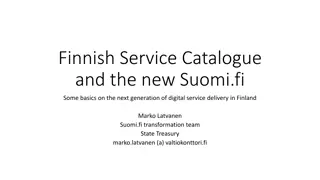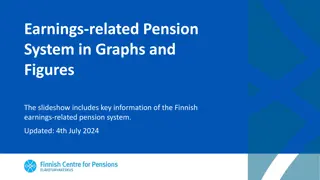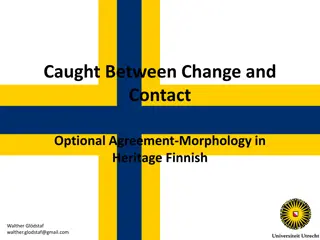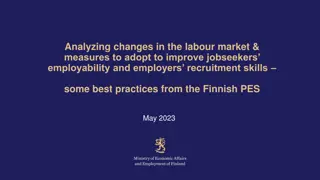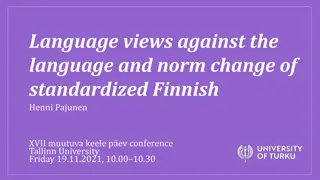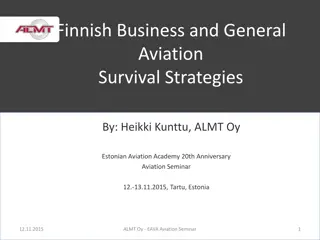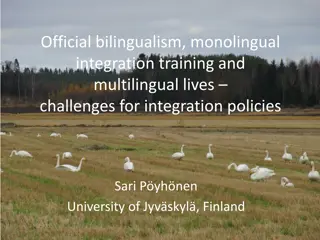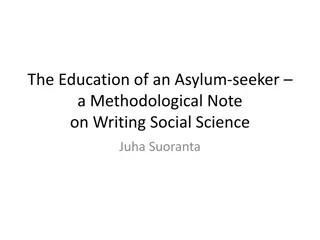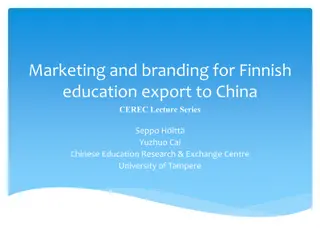Finnish Core Curriculum: New Approach to Learning
Building on strengths for a sustainable future, the Finnish Core Curriculum emphasizes fostering curiosity, critical thinking, problem-solving, and collaborative learning. It promotes active citizenship, engagement, and feedback to enhance learners' self-confidence and motivation. The curriculum focuses on developing pedagogy and school culture to meet pupils' needs, ensure equality, and encourage international cooperation. Trends in learning and pedagogy before the core curriculum highlight the shift towards global citizenship, self-assessment, collaboration, and authentic learning experiences.
Download Presentation

Please find below an Image/Link to download the presentation.
The content on the website is provided AS IS for your information and personal use only. It may not be sold, licensed, or shared on other websites without obtaining consent from the author.If you encounter any issues during the download, it is possible that the publisher has removed the file from their server.
You are allowed to download the files provided on this website for personal or commercial use, subject to the condition that they are used lawfully. All files are the property of their respective owners.
The content on the website is provided AS IS for your information and personal use only. It may not be sold, licensed, or shared on other websites without obtaining consent from the author.
E N D
Presentation Transcript
Finnish Core Curriculum New Approach to Learning Tiina Sarisalmi October 2016
What we learn? How we learn? to foster curiosity, encourage questioning and critical thinking to develop problem-solving skills, link learning to real-life problems and encourage pupils to work together to increase understanding, apply cross-curricular approach to raise active citizens, promote participation and engagement to strengthen learners' self-confidence and learning motivation, give constructive and honest feedback IT IS ABOUT DEVELOPING PEDAGOGY AND SCHOOL CULTURE
Basis of the core curriculum Building on strengths Sustainable future as an objective Equality in all areas of education Meeting pupils' (special) needs and supporting wellbeing International cooperation and global responsibility Awareness of languages and cultures, regarding them as richness Rapid and accelerating development of information and communication technology Challenges set for literacy in the context of multimedia
TRENDS IN LEARNING AND PEDAGOGY BEFORE CORE CURRICULUM 2016 THE FUTURE Scandinavia and Europe as cultural context Global context and cultural diversity: growing up to global citizenship and for sustainable future Summative testing, sticks and carrots Learning to learn, self-assessment and self- regulation: assessment aims to supporting and guiding the learning process, based on students strenghts Performance Collaboration and interaction: team work and peer learning, partnership classes, games Teacher-centered Engaging students and learning-by-doing: focusing on students interests
TRENDS IN LEARNING AND PEDAGOGY BEFORE CORE CURRICULUM 2016 THE FUTURE Literacy Multi-literacy: to read and produce multimedia texts, pics and videos Content-based learning Skills and competences Receiving information and cramming, learning-by-heart, Constructing knowledge, creativity and problem solving: critical analysis of knowledge, inquiry- and project-based learning understanding Subject-based text books and classrooms Authentic learning: real-life texts, videos and pics, real-world problems and phenomena, real- life communication and learning environments, cross-curricular context
ATTITUDES & VALUES Openness towards and respect for people from other cultures Global responsibility for sustainable development Equity, equality and democracy Valuing human dignity and cultural diversity
School as learning community Strengthening pupils' positive and realistic self-image as learners Emphasis on unhurried pace and peace Interaction and empowerment Wellbeing and safety in daily life Awareness and respect for diverse cultures and languages Responsibility for sustainable future
Whats changing at school culture and practices? Diverse learning environments: studying takes place more outside classroom and in virtual environments. Students move more and sit less. Students use more computers, tablets and their own device (BYOD). Students study coding, computing and computational thinking throughout basic education Active learning methods like drama, role play, debate and gaming are used more often. Tiina Sarisalmi
Whats changing in school culture? Students take part in the design of their learning. More projects, exploring and solving real-life problems in groups. Students of different ages and grades work more together. Teachers work more together (co-teaching). Students can be teachers and teachers can be students. Fewer summative tests (assessing what s been learned) and more supporive feed back, self and peer assessment (assessing learning). Tiina Sarisalmi
Whats changing in school practices? Students are encouraged to find and use their strenghts and make use of their interests. Students study more often multi-disciplinary learning modules and phenomena from cross-curricular point of view. Students get friends and cooperate with students from different countries and cultures in their own school, neighborhood or via internet. Teachers build professional networks also internationally. Students participate in developing their own school, promoting sustainability and making the world a better place! Tiina Sarisalmi
Implementation of FCC: Development plans and projects Information and communication technology Professional development and teacher training Pedagogical support Investments in device and technology Global education and inter- nationalization of education Professional development and teacher training Professional (international) networks Development networks Sharing best practices
For the majority of teachers this means a giant step outside their comfort zone and a leap to unknown. It won t happen without the unconditional support of the head teacher and the cooperation of the whole school community. Fortunately, in the new curriculum, we are all, both teachers and students, given the right to make mistakes and learn from them.
Implementation of the FCC What is needed: Change management National, regional and local coordination in the implementation process Shared goals and commitment Collaboration Trust in each other
Implementation of the FCC New way to see Curriculum: Curriculum can be considered a process (not a product) Curriculum is showing the way and the how (not what) Curriculum is flexible and developing (not stagnant)
THANK YOU! http://schoolsgoingglobal.blogspot.fi/ tiina.sarisalmi@orivesi.fi Special thanks to Irmeli Halinen, former Head of Curriculum Development At the Finnish National Board of Education: http://www.oph.fi/download/151294_ops2016_curriculum_reform_in_finland.pdf
